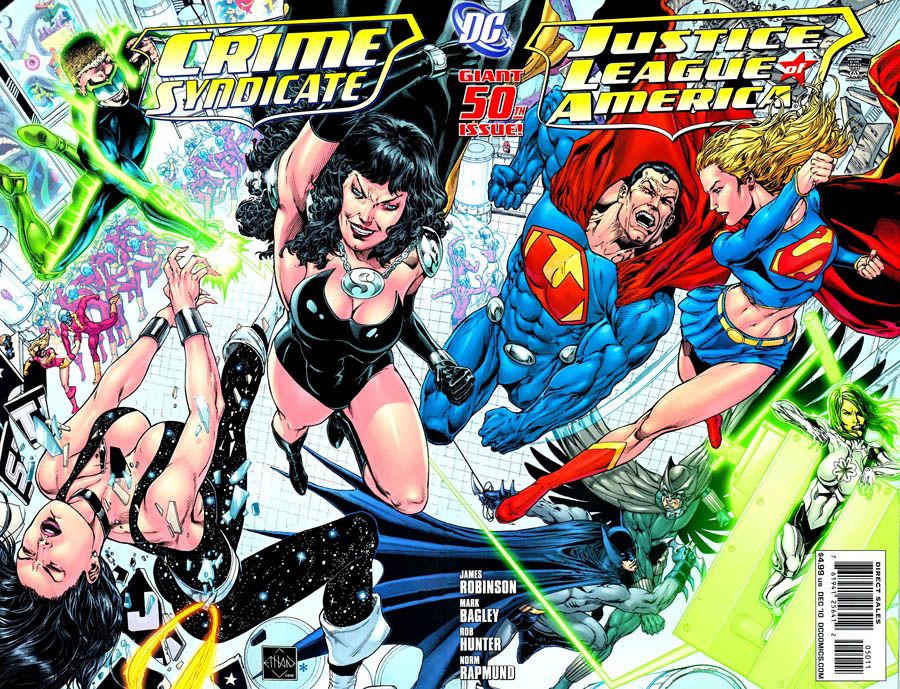Am I the only one wishing this had been the first issue from James Robinson on "Justice League of America" instead of his "Blackest Night" issues or the "Justice League: Cry for Justice" mini-series? Maybe it's because the book is no longer being sucked into events, crossovers, and line-ups that get undone two issues later, but for the first time I think this could really work.
It's nice that now the dust has settled, five of his seven-member core line-up are essentially "next generation" editions of the "big seven" JLA founders, and Robinson is for the first time starting to sell the idea that these are characters who belong in the League, rather than just the Teen Titans or Outsiders. Putting them up against the Crime Syndicate is a good move, letting us go up against their evil counterparts, but in general the Syndicate works well here. Robinson's dialogue for them about their ever-changing and shifting nature is a nice nod towards the audience about the flux that the Justice League has gone through over the past few years, and also serves as a good reminder that they are little more than a dark mirror held up against the main DC Universe, forced to step in time with what's happening in the company's main titles.
More importantly, the new line-up of characters is shaping up. With Starman and Congorilla temporarily away to star in an upcoming one-shot, it lets Robinson shift off of arguably the two characters that have worked the best so far, and start building relationships between the remaining five. Jesse Quick and Supergirl's opening scene is classic superhero material, but there's an ease about it that hasn't been present up until now in Robinson's "Justice League of America." And while some scenes work better than others (Jade in Egypt felt slightly forced in terms of set-up for future stories), I do appreciate the guest-stars popping up here and there. Felix Faust and Tangent Green Lantern are hardly characters you'd expect, but it works.
Mark Bagley's pencils are also looking more energized on the title than we've seen before; for the first time it feels like the work he's done on "Trinity" and "Batman," and a step back towards the Bagley whose art was a big selling point. It's the little things here that stand out in particular, like the big grins on Jesse's and Kara's faces as they run, or the look of sheer malice and destruction on Superwoman's face as she goes up against Donna Troy. But on the whole, there's a much more cohesive, smooth, natural look to the characters. "Justice League of America" #50 might be a double-sized issue, but this doesn't look rushed at all.
It's nice to see "Justice League of America" also finally addressing some dangling subplots, like Doctor Impossible's scheme that started a year ago. Or, for that matter, exactly what Impossible's is, since we've gotten little more than hints and potential lies since he showed up way back in "Justice League of America" #1. Ever since Brad Meltzer left after "Justice League of America" #12 this has been a book that's felt adrift and being pulled in multiple directions by everyone but the writer. For the first time since then, it's starting to look like the writer is steering the ship again. With any luck, it'll stay that way for a long time to come.

